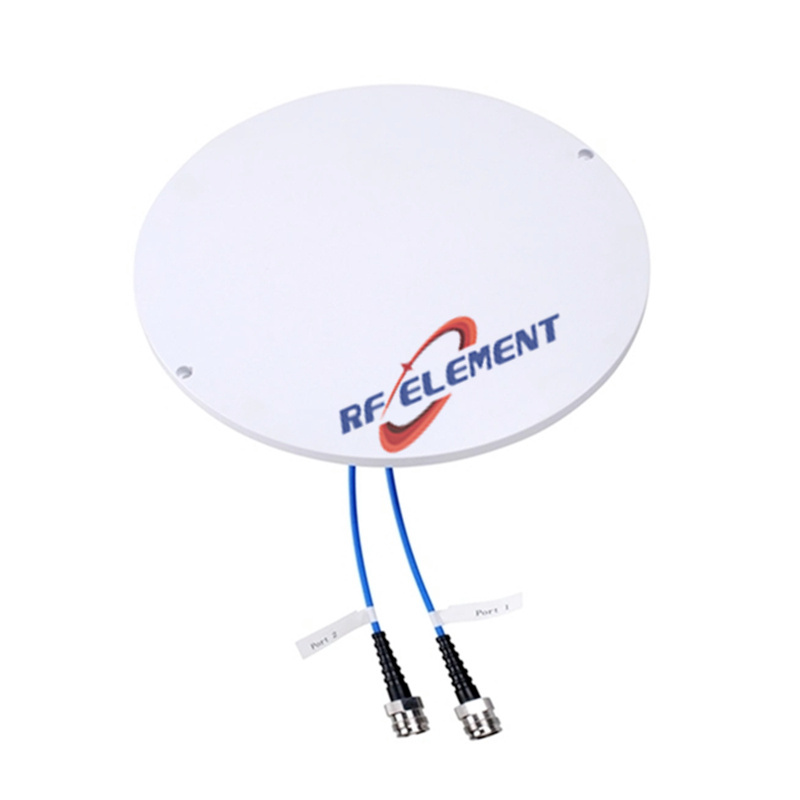Low PIM Antenna, The Indoor 5G Antenna- Our Technological Leaps


Today, antennas are key to us talking to each other without any trouble. For phone companies and the like, one thing they need to keep in check is a kind of interference known as Passive Intermodulation Interference, or PIM for short. If this interference gets too high, it can muddle our calls and connections. This post will focus on a type of antenna designed to keep this interference low, specifically aiming for a PIM level way below -150 dBc. We'll explain why this is so crucial.
Understanding Low PIM Antennas
A "Low PIM Antenna" is designed to minimize Passive Intermodulation Interference. PIM interference arises from nonlinear effects that generate unwanted signals within an antenna. To combat this issue, engineers have developed "Low PIM Antennas" specifically engineered to reduce PIM interference.
The Problem with PIM Interference
PIM interference occurs when multiple frequency signals interact in a communication system, resulting in the creation of new frequencies that are typically unwanted and disruptive. This issue becomes particularly pronounced in high-power communication systems, such as cellular mobile base stations and satellite communication ground stations.
PIM interference can lead to the following adverse effects:
Deterioration of Signal Quality: PIM interference distorts signals, compromising communication quality and rendering data transmission unreliable.
Communication Interruptions: In some cases, PIM interference can cause communication interruptions, which are unacceptable for critical communication applications.
Reduced Network Capacity: PIM interference limits network capacity as the interference signals occupy available spectrum.
To address these challenges, Low PIM Antennas were developed.
Key Features of Low PIM Antennas
Low PIM Antennas are characterized by several key features:
Specialized Materials: Low PIM Antennas typically employ specialized materials with minimal impact from nonlinear effects, thus reducing PIM interference generation.
Precision Manufacturing: Manufacturing Low PIM Antennas demands a high level of precision to ensure secure connections and minimize loose components, which can also contribute to PIM interference.
Stringent Testing: Low PIM Antennas undergo rigorous testing to demonstrate their performance in real-world conditions, often involving exposure to high-power signals to simulate actual operating conditions.
Why -150 dBc Matters
In the field of communication systems, the measurement unit for determining PIM interference levels is often expressed in dBc (decibels relative to the carrier). Negative values indicate that the interference signal's power is lower than that of the carrier signal, which is the desired state. Therefore, -150 dBc represents an exceptionally low level of PIM interference, deemed suitable for the majority of communication applications.
But why is being below -150 dBc so crucial? Here are some reasons:
Ensuring Communication Quality: A PIM interference level below -150 dBc guarantees high-quality performance, ensuring clear and stable communication.
Minimizing Network Interference: PIM interference can introduce unnecessary noise into a network, limiting network capacity. Low PIM Antennas help reduce this interference.
Meeting Regulatory Requirements: In certain countries and regions, communication equipment must adhere to specific PIM interference standards to ensure electromagnetic compatibility and effective spectrum management.
Applications of Low PIM Antennas
Low PIM Antennas find applications across various communication systems, including but not limited to:
Cellular Mobile Communication: Cellular networks rely on Low PIM Antennas to maintain high-quality communication while increasing network capacity.
Satellite Communication: When we're sending messages to satellites and back, special antennas help keep the conversation clear and steady. These antennas are super at reducing interference, making sure we hear the satellite loud and clear.
Public Safety Communication: When it comes to our brave first responders—like police, firefighters, and medics—having a clear connection is a must. That's where these same low-interference antennas come in. They make sure their radios and devices work smoothly, no matter what.
Low PIM Antennas represent a critical component in modern communication systems, engineered to minimize Passive Intermodulation Interference and ensure high-quality performance. PIM interference levels are typically measured in dBc, with -150 dBc being the ideal target to guarantee exceptional communication system performance. In the wireless communication sector, the importance of Low PIM Antennas continues to grow as communication demands evolve.


